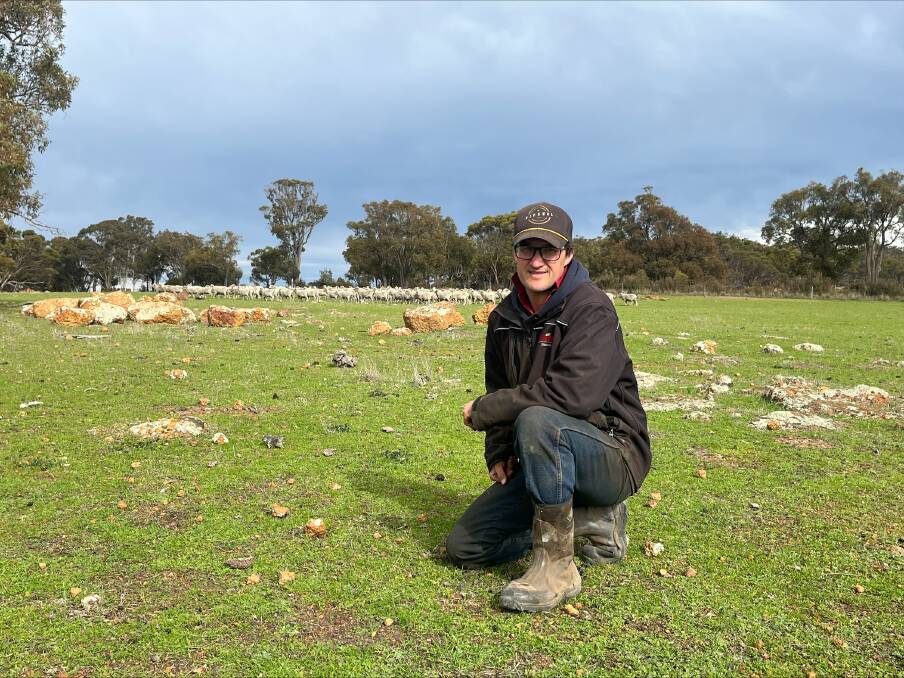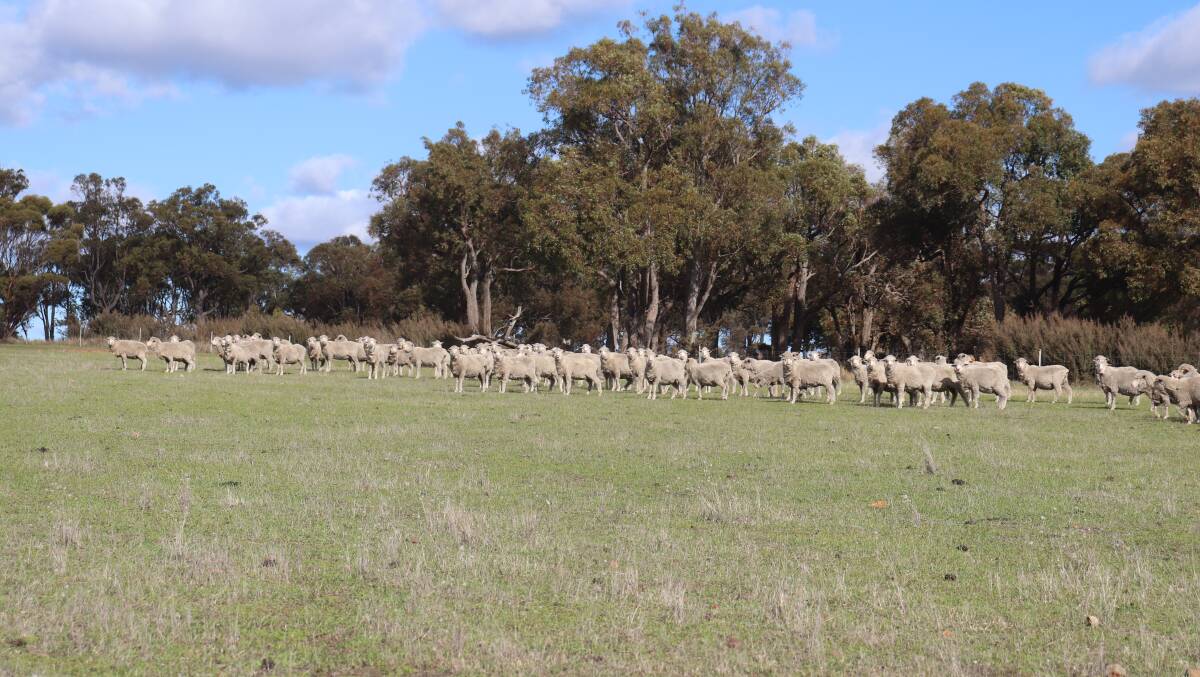
Third generation Merino producer Theo Cunningham is using science to drive his flock to success at his family-owned Cranbrook property.
Beeac Estate, was purchased and named by Mr Cunningham's grandfather James in the 1950s after jackarooing in Victoria.
Since the 1950s, Mr Cunningham's father Twynam built an empire, growing the initial 400 hectare bush block - which was half cleared by James Cunningham - into an operational 11,000-hectare property, made up of both owned and leased land that is now completely operated by Mr Cunningham himself.
The properties stretch from the home farm at Cranbrook through to Tambellup, which is currently home to 8000 Merino breeding ewes, 3000 wethers and 3000 dry ewes, that make up 20 per cent of the whole farm business.
Although the cropping program takes up 80pc, the sheep are a valuable asset and perfectly complement the cropping program.
"We utilise the more salty land that we can't crop to run our Merinos on," Mr Cunningham said.
The dual-purpose ability and easy management Merinos have to offer is the main driver behind them being the perfect fit.
"Their versatility and ability to perform really well on some of our worst country is really beneficial for us," he said.

The Sandilands family's Billandri Poll Merino stud, Kendenup, has played a vital role in improving the Merino genetics at Beeac Estate.
Bill Sandilands was one of the first breeders in the area to use Australian Sheep Breeding Values (ASBV), which was the initial reason the Cunningham family decided to purchase rams from the stud.
With Mr Cunningham having an Agricultural Science degree under his belt, it has driven him to make science-based decisions around any aspect of farming - especially when it comes to breeding and genetics.
"Bill has always been solid on objective measurements of genetics, which for me is very important," Mr Cunningham said.
"If it's proven by science, you can't really argue with it."
Having a more wool-based approach means that meat and carcase weight characteristics would usually have minimal impact when it comes to selecting rams.
"I think wool will always be in demand, it's such a luxury fibre and there is nothing else like it," he said.
Although ram selection is heavily ASBV-based, Mr Cunningham said because a ram had a good genetic make-up and figures, didn't mean it would produce good offspring, and visual appraisal was just as important.
"Ideally, we want a smaller-framed sheep that cuts fine wool," he said.
"Micron isn't really a problem when we select because Billandri wool is fine anyway.
"Staple length and strength is really important too.
"When we shear in February we get a 17 micron wool clip that we are really happy with."
For the past four to five years, Mr Cunningham has focused more on ram size.
"We used to just pick fine wool rams regardless of body size," he said.
"Now, we have selected high micron rams with bigger frames to try to increase the size of our wether lambs."
The sire battery comprises 160 rams that are put out at a 1.8-2pc rate when joined with ewes on February 14, for four weeks.
Mr Cunningham has shortened his breeding season from five to four weeks to create a tighter lambing period.
"This was to try even out the size of lambs, and it has paid off," he said.
Pregnancy scanning is seen as a necessity and an important part of the breeding program.
"For me, scanning is a refinement process," Mr Cunningham said.
"If you are able to figure out how many lambs, from both single and twin-bearing ewes, you will know how many lambs you'll have at the end of the season and you can accommodate and budget for them accordingly."
This year, Mr Cunningham achieved a 128pc conception rate (number of lambs conceived to joined ewes).
"This year we have 40pc of our ewes in lamb with twins," he said.
Any ewes that are dry after scanning are sold off.

A mid-July lambing is the optimum time at Beeac so it doesn't clash with seeding and means lambs are dropping onto quality feed.
"The fact that we can still have 122pc lambing, from sheep that are grazed on salty land, is amazing," Mr Cunningham said.
Wether lambs are usually sold to the Wheatbelt farmers to graze stubbles, although this year they were retained.
"We had a lot of stubbles that weren't being utilised, so we decided to carry them over and get another wool cut off them," Mr Cunningham said.
"From now on we will keep the majority of the wether lambs for that reason and sell about 1000 as lambs in October for an extra income."
In the final week of August, the animal health practices are carried out at lamb marking and tailing.
"Pain relief is really important at lamb marking and we use Tri-Solfen to help," Mr Cunningham said.
The lambs are marked in small mobs, with Mr Cunningham and staff using a set of portable yards so the sheep don't have to travel too far.
"Our farms are quite spread out.
"So, having portable yards not only decreases the distance lambs have to travel, but it saves us time and we've found it has helped with the mothering-up process."
Mr Cunningham still muleses his sheep to prevent them being fly blown during summer when they are harvesting.
"This comes down to a management point of view - it is difficult to treat fly-blown sheep during harvest, so mulesing reduces the risk of that happening," he said.
Lambs are imprint fed with lupins leading up to weaning in mid-October, before being weaned onto lupin stubbles, to make the transition easier for them.
"This way lambs already know what lupins are and we won't struggle with feeding them after they are weaned," Mr Cunningham said.
Doubling the lupin intake in the past four to five years has been a game changer production-wise and it has seen him reap the rewards in more ways than one.
"Making sheep fatter and healthier has made management easier," he said.
"I've also noticed it has improved conception and pregnancy rates, as well as lamb survival."
All of the sheep on the property are supplementary fed with lupins as soon as they go onto stubbles.
"The stubbles help the sheep digest the lupins so they benefit from them more," Mr Cunningham said.
When the sheep are grazing on stubbles, they are fed 100 grams of lupins per head, per day, before their daily lupin intake slowly increases leading up to being put onto better pasture feed in July/August.
"We don't generally feed them when they are lambing because we don't want to disturb them, we will only feed lupins if it's a hard year and they need it," Mr Cunningham said.
"We have started growing our lupins a lot better, averaging about two tonnes per hectare, which means we will get about 1000t of lupins a year that we can feed out."
Tall wheatgrass is also sown on the more dire country, and saltbush is grazed as an additional feed source.

